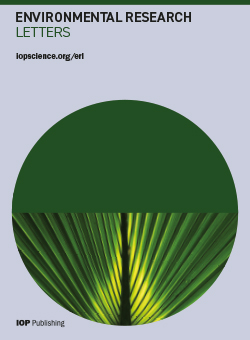尼泊尔的太阳能灌溉:对化石燃料使用和地下水开采的影响
IF 5.8
2区 环境科学与生态学
Q1 ENVIRONMENTAL SCIENCES
引用次数: 0
摘要
近年来,太阳能灌溉泵(SIP)在尼泊尔农业平原(德赖)的使用显著增加。当地联邦政府和地方政府为这些水泵提供补贴,以扩大利用可再生能源进行农业灌溉的规模。我们利用对 656 户农户的横截面调查数据,研究了 SIP 如何影响化石燃料的使用和地下水的开采。我们发现,大多数 SIP 用户继续使用化石燃料水泵,只有极少数用户完全用太阳能水泵取代了化石燃料水泵。与未使用太阳能水泵的农民相比,使用太阳能水泵的农民使用灌溉水泵的时间更长。综合来看,这些发现表明,由于获得 SIP 的农民 "叠加 "了水泵,地下水的使用量有所增加。我们还发现,与较贫困和社会地位相对较低的家庭相比,较富裕和拥有较好社会网络的家庭更有可能拥有太阳能水泵。随着尼泊尔扩大太阳能水泵在农业中的使用,政策努力可能会从以下方面受益:管理对该技术碳减排潜力的预期;随着太阳能水泵使用的扩大管理地下水风险;以及使太阳能水泵改善计划更具包容性。本文章由计算机程序翻译,如有差异,请以英文原文为准。
Solar-powered irrigation in Nepal: implications for fossil fuel use and groundwater extraction
In recent years, use of solar-powered irrigation pumps (SIPs) has increased significantly in the agricultural plains (terai) of Nepal. Federal and local governments there have subsidized the pumps in an effort to expand irrigated agriculture using renewable energy. We use data from a cross-sectional survey of 656 farming households in the terai to examine how SIPs affect fossil fuel use and groundwater extraction. We find that most SIP users continued to use their fossil-fuel pumps, as very few completely replaced them with solar pumps. Farmers who received SIPs operated their irrigation pumps more hours than those who did not receive SIPs. Taken together, these findings suggest that groundwater use has increased, as SIP recipients ‘stack’ their pumps. We also find that solar pumps were more likely to be owned by richer households and those with better social networks than those who were poorer and had relative social disadvantage. As Nepal expands the use of solar pumps in agriculture, policy efforts may benefit from managing expectations about the carbon-mitigation potential of this technology, managing groundwater risks as SIP use expands, and making SIPs more inclusive.
求助全文
通过发布文献求助,成功后即可免费获取论文全文。
去求助
来源期刊

Environmental Research Letters
环境科学-环境科学
CiteScore
11.90
自引率
4.50%
发文量
763
审稿时长
4.3 months
期刊介绍:
Environmental Research Letters (ERL) is a high-impact, open-access journal intended to be the meeting place of the research and policy communities concerned with environmental change and management.
The journal''s coverage reflects the increasingly interdisciplinary nature of environmental science, recognizing the wide-ranging contributions to the development of methods, tools and evaluation strategies relevant to the field. Submissions from across all components of the Earth system, i.e. land, atmosphere, cryosphere, biosphere and hydrosphere, and exchanges between these components are welcome.
 求助内容:
求助内容: 应助结果提醒方式:
应助结果提醒方式:


